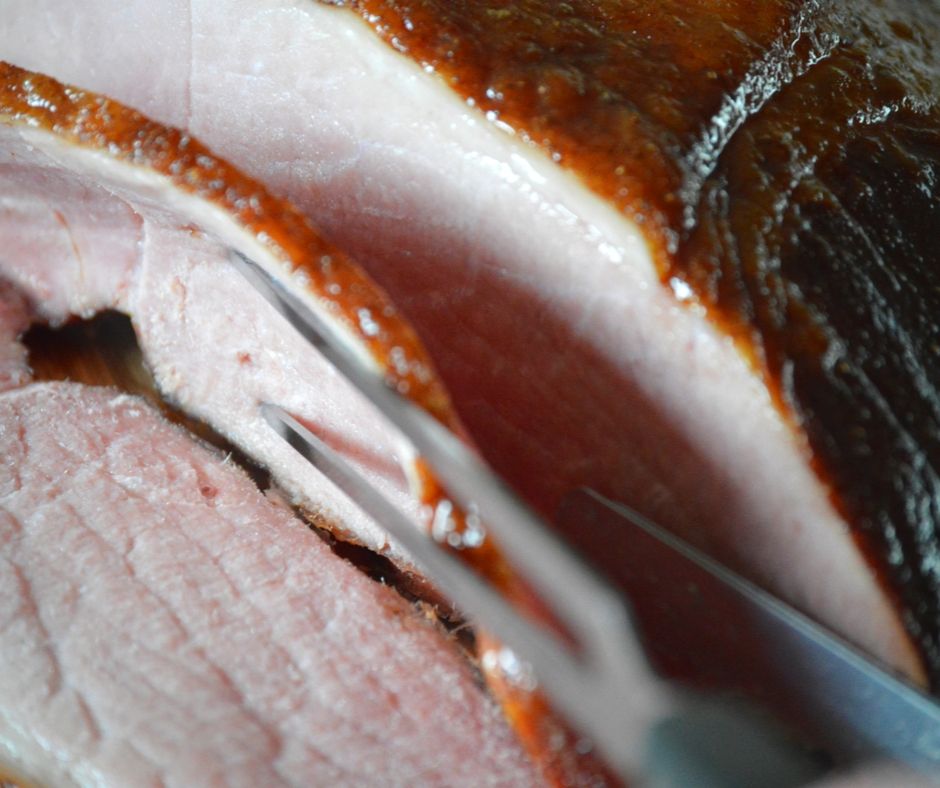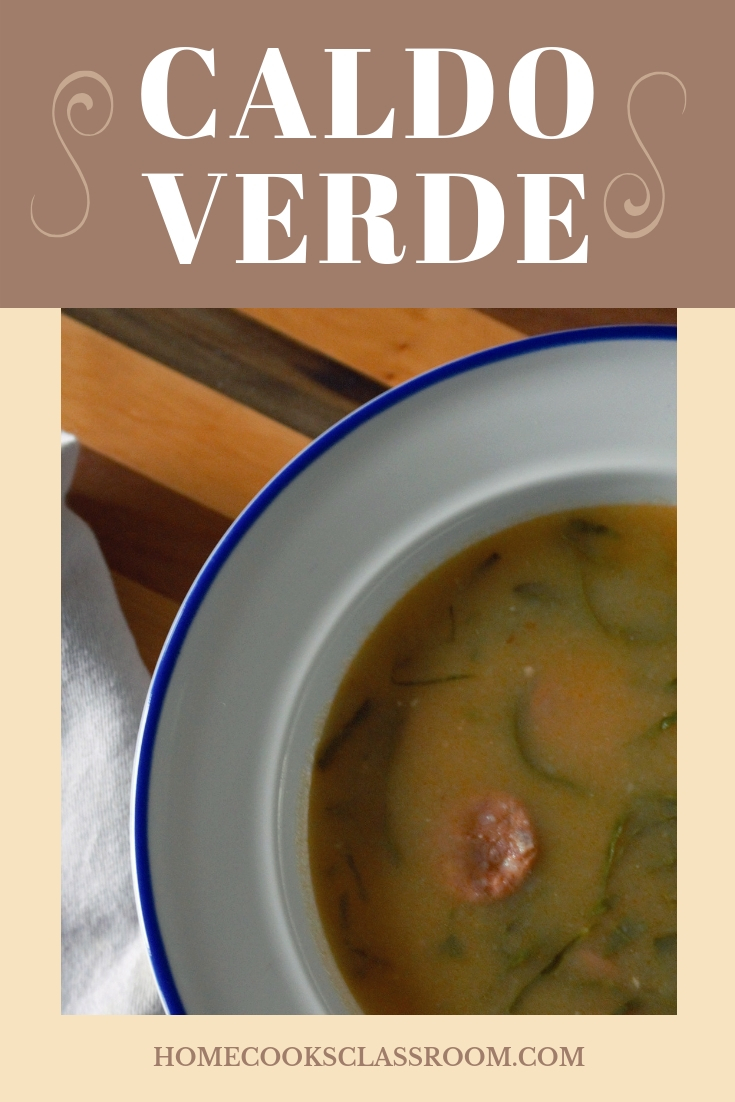
I’d like to start off today’s lesson by recalling a short conversation that recently happened between my parents and myself. They were about to go on a trip to the wonderful country of Portugal, and I decided to ask them what kind of Portuguese dishes they were looking forward to eating the most. They paused, and answered, “No clue, we don’t know anything about Portuguese cuisine”. “You don’t know!?” I replied “I mean there’s the classics, like, like…..” at which point I also paused, and realized that I too, had no clue about Portuguese cuisine. I mean sure, I knew that Portuguese cuisine was similar to many other Mediterranean cuisines in that they include a lot of olive, grape, and fish ingredients. But as far as the cuisine itself, all I really knew was that they made linguica sausage. And that is a shame because Portuguese cuisine is incredibly deep, and rich, yet unfortunately it has been greatly underappreciated by many of us, especially me. And with that humbling realization, I set out to right that wrong, and do as much research into Portuguese cuisine as I could.
I learned about a number of Portuguese staples such as piri piri sauce (which I was already familiar with, but had no clue was Portuguese), feijoada, and bacalhau, but the one dish that really stood out to me the most was caldo verde. For those of you who are unfamiliar with the dish, it translates as “green broth” and is a soup/stew that is mainly composed of potatoes, sausage, and greens, hence the name green broth.
It is both incredibly comforting on a cold day, and fairly healthy considering the good amount of greens that are used in it. Now I would like to say that while doing my research on caldo verde I came to the realization that it is one of those dishes that everyone’s grandmother has their own version of. So while I tried to keep this recipe traditional, don’t get mad if it isn’t exactly like the one your grandmother used to make. Ok, we got that out of the way, let’s get back to the caldo verde. As I said there are three main components to caldo verde, the potato, the sausage, and the greens, so I thought we should talk a little bit about each.
First the potatoes, to my understanding the traditional method would be to cook the potatoes in the broth for such a long period of time that they actually would break down and become a part of the broth. Thankfully this process can easily be sped up by simply blending the potatoes into the broth, which is the method that I am employing in today’s recipe. However, my family loves chunks of potatoes in their soup, so I did make one nontraditional adjustment to this recipe by adding in an additional potato that would remain as chunks. So if you also like chunks of potatoes then follow this recipe to a tee, however, if you want your caldo verde to be more traditional, then simply skip this step.
Now, as far as what sausage is used in caldo verde, my research has shown me that the most commonly employed type would be a spicy Portuguese sausage name linguica.

It is filled with garlic, chili peppers, and paprika, and is fundamental in providing the bulk of the flavor to the soup. I guess what I’m trying to say here is that if you want to make this soup vegetarian and omit the sausage then, by all means, be my guest, but the end result will be fairly bland. Now I also understand that linguica isn’t the most commonly found type of sausage in the world (especially here in the US), but don’t worry if it is out of your reach, as you can easily substitute it with any other type of smoked sausages, such as andouille, or chorizo. However, if you can find linguica then please use it, as it will provide the best flavor.
Lastly is the greens, and what I have found is that two types of greens are the most commonly employed, collard greens, and kale. I still have no clue as to which one is the more traditional of the two, as it seems like half of the recipes that I found used collard greens, while the other half used kale. So I guess it really just comes down to whichever of the two you prefer. For example, I definitely prefer collard greens over kale, and thus I used collard greens in this particular recipe. However if you like kale, or really any other type of green, over collard greens, then feel free to use that instead.
Ok, I think that’s about it, so why don’t we move on and dive into the recipe itself!
Caldo Verde Recipe
Prep time: 10 minutes
Cook Time: 1 hour & a half
Servings: 6 to 8
Ingredients
12 oz of linguica sausage cut into ¼ inch sized coins
¼ Cup of olive oil
2 Cloves of garlic
1 Onion yellow (peeled and roughly chopped)
2 Large russet potatoes (peeled & roughly chopped)
1 Additional large russet potato (peeled & cut into inch sized chunks)
2 Quarts of chicken stock
1 LB of Collard greens (or any other type of greens that you prefer)
Instructions
1. Brown up the linguica: Get out a large pot, put the olive oil in it, and set it over a medium high heat on your stove top. Once the oil has become hot, toss in the pieces of linguica sausage and fry them for about 5 minutes. After this take the pieces of sausage out with a slotted spoon, and place them on a plate to be used later.


2. Make the broth: Keep the same pot over a medium high heat, and toss in the onion and garlic, sauteing them both for about 5 minutes. Next add in both the chicken stock, and the 2 russet potatoes, and let everything come to a boil. Once it has come to a boil, reduce the heat to medium low, and let it simmer for about 30 minutes, or at least until the potatoes are tender. At the end, take the pot off of the stove, and use either a regular blender, or an immersion blender to blend everything until it makes a smooth creamy broth.

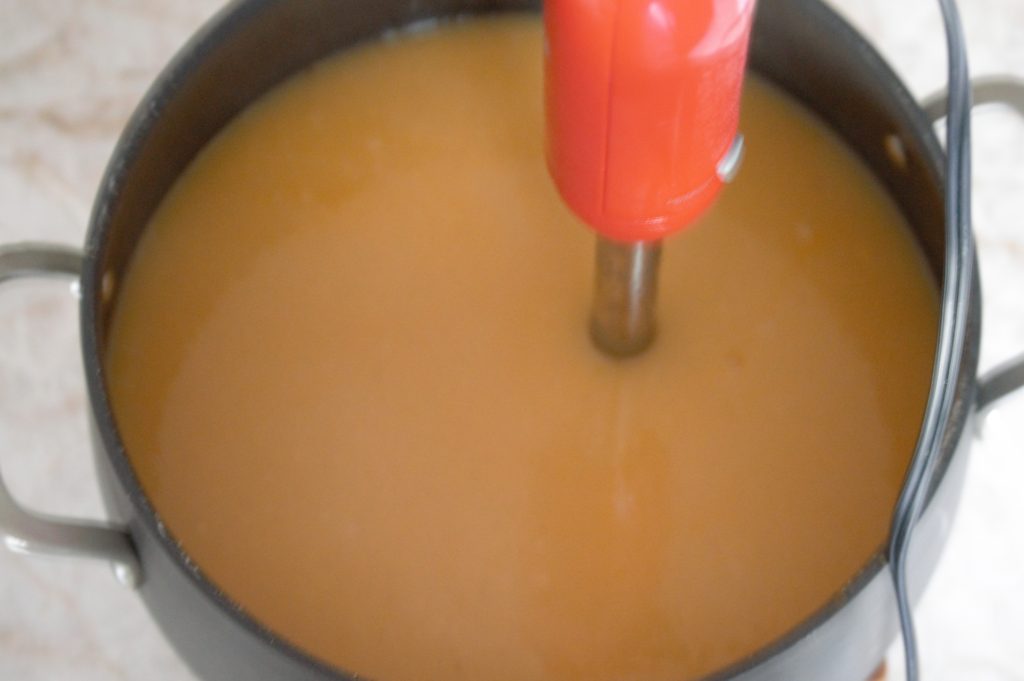
3. Add the sausage and potato: Place the pot back on your stove, and add back the cooked sausage and the one remaining potato. Let the soup simmer again for another 40 minutes so that the chunks of potato are fork-tender.
*fork tender: Checking the doneness of something based on how easy it is to pearse the object with a fork. If the fork pearses easily then the food is tender, if it is difficult to pearse then it isn’t tender.
4. Prep & add the greens: Wash the greens that you plan to use in the soup, and remove the stem that runs up the middle of each of them.

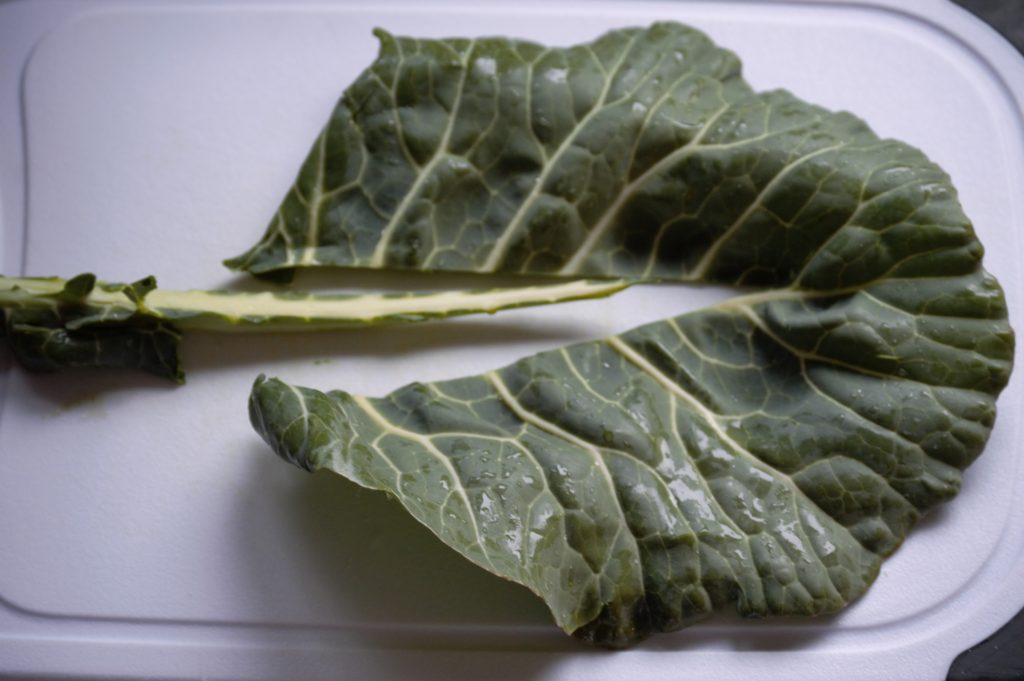
Next we are going to cut the greens in a chiffonade style. To do this simply take a stack of the destemed greens and roll them up like a cigar. Then hold the greens tightly in this manner, and slice them into slender ribbons.
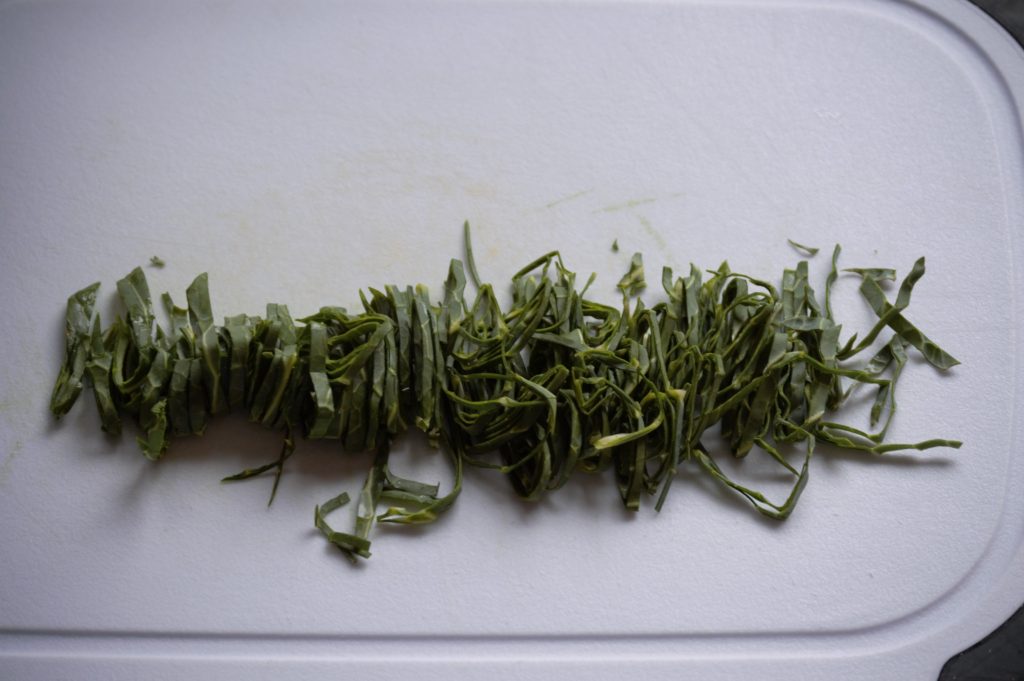
If you would like to know more about chiffonade, or any other type of cuts, then take a second and check out an older post I made on that topic. Once all of the greens are prepared toss them into the simmering soup and let them cook in there for about 10 to 20 minutes.
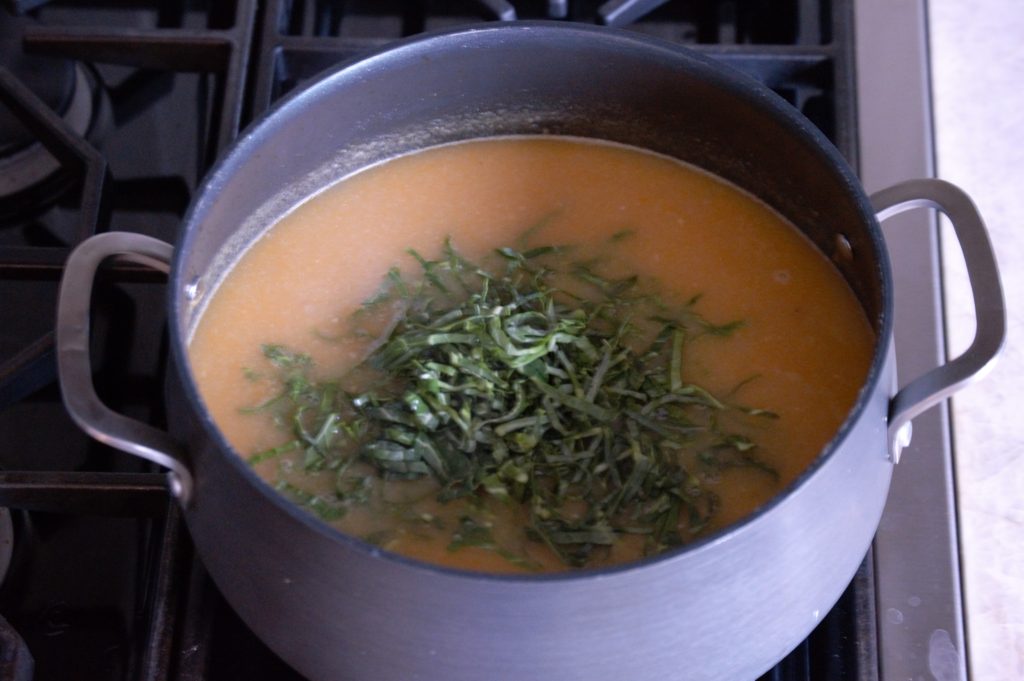
5.Serve & enjoy
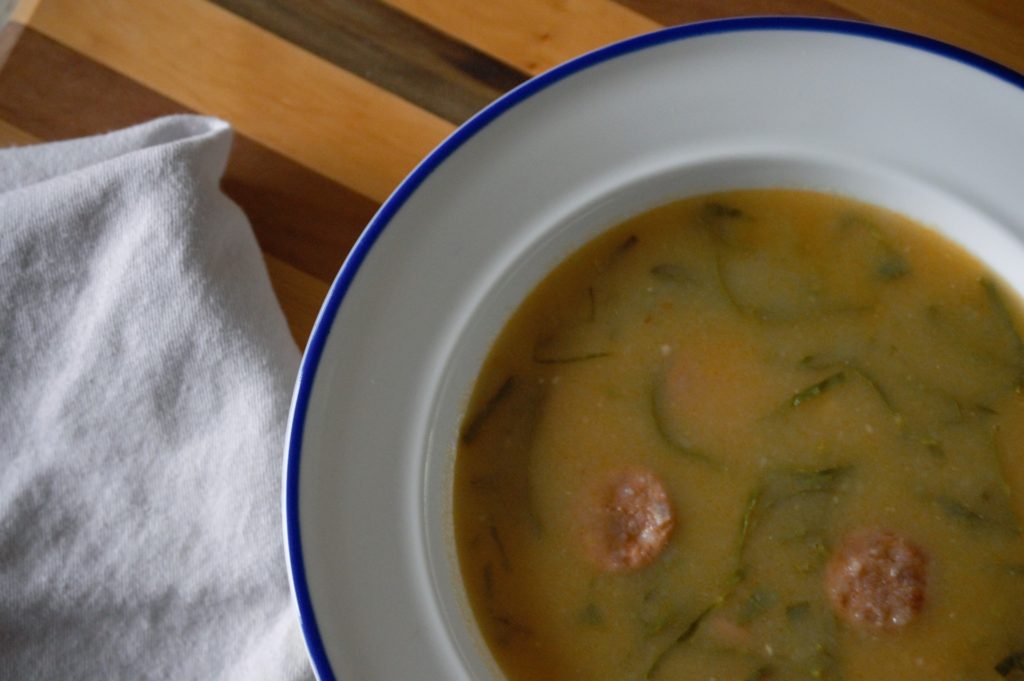
Caldo Verde Recipe
Ingredients
- 12 oz of linguica sausage cut into ¼ inch sized coins
- ¼ Cup of olive oil
- 2 Cloves of garlic
- 1 Onion yellow peeled and roughly chopped
- 2 Large russet potatoes peeled & roughly chopped
- 1 Additional large russet potato peeled & cut into inch sized chunks
- 2 Quarts of chicken stock
- 1 LB of Collard greens or any other type or greens that you prefer
Instructions
- Brown up the linguica: Get out a large pot, put the olive oil in it, and set it over a medium high heat on your stove top. Once the oil has become hot, toss in the pieces of linguica sausage and fry them for about 5 minutes. After this take the pieces of sausage out with a slotted spoon, and place them on a plate to be used later.
- Make the broth: Keep the same pot over a medium high heat, and toss in the onion and garlic, sauteing them both for about 5 minutes. Next add in both the chicken stock, and the 2 russet potatoes, and let everything come to a boil. Once it has come to a boil, reduce the heat to medium low, and let it simmer for about 30 minutes, or at least until the potatoes are tender. In the end, take the pot off of the stove, and use either a regular blender or an immersion blender to blend everything until it makes a smooth creamy broth.
- Add the sausage and potato: Place the pot back on your stove, and add back the cooked sausage and the one remaining potato. Let the soup simmer again for another 40 minutes so that the chunks of potato are fork-tender.
- *fork tender: Checking the doneness of something based on how easy it is to pearse the object with a fork. If the fork pearses easily then the food is tender, if it is difficult to pearse then it isn’t tender.
- Prep & add the greens: Wash the greens that you plan to use in the soup, and remove the stem that runs up the middle of each of them.
- Next we are going to cut the greens in a chiffonade style. To do this simply take a stack of the destemed greens and roll them up like a cigar. Then hold the greens tightly in this manner, and slice them into slender ribbons.
- If you would like to know more about chiffonade, or any other type of cuts, then take a second and check out an older post I made on that topic. Once all of the greens are prepared, toss them into the simmering soup and let them cook in there for about 10 to 20 minutes.
Inspiration from other blogs
From Leite’s Culinaria
From Olivia’s Cuisine




